A TV presenter with a traditional Māori face tattoo has calmly replied to negative comments from a viewer, proudly standing up for her cultural heritage and identity.
Facial tattoos often spark debates online. Some people think tattoos should only be on the body, while others understand and appreciate their cultural importance.
Oriini Kaipara, 41, made history when she became a newsreader for New Zealand’s Newshub. She is the first primetime TV news presenter to wear a moko kauae, a special facial tattoo for Māori women.
The Māori are the indigenous people of mainland New Zealand. They see moko kauae as important symbols of their heritage and identity. These tattoos, traditionally on the lips and chin, show a woman’s family ties, leadership, and honor her lineage, status, and abilities.

Oriini Kaipara. Credit: Oriini Kaipara / Instagram.
Despite receiving praise, one viewer named David expressed his dislike for Kaipara’s moko kauae in an email to Newshub.
He wrote, “We continue to object strongly to you using a Māori newsreader with a moku [moko] which is offensive and aggressive looking. A bad look. She also bursts into the Māori language which we do not understand. Stop it now,” according to the Daily Mail.
But Kaipara didn’t let David’s negative words stop her. She bravely shared screenshots of his messages on her Instagram story and responded calmly.
“Today I had enough. I responded. I never do that. I broke my own code and hit the send button,” she wrote on her Instagram story alongside a screenshot of David’s message.
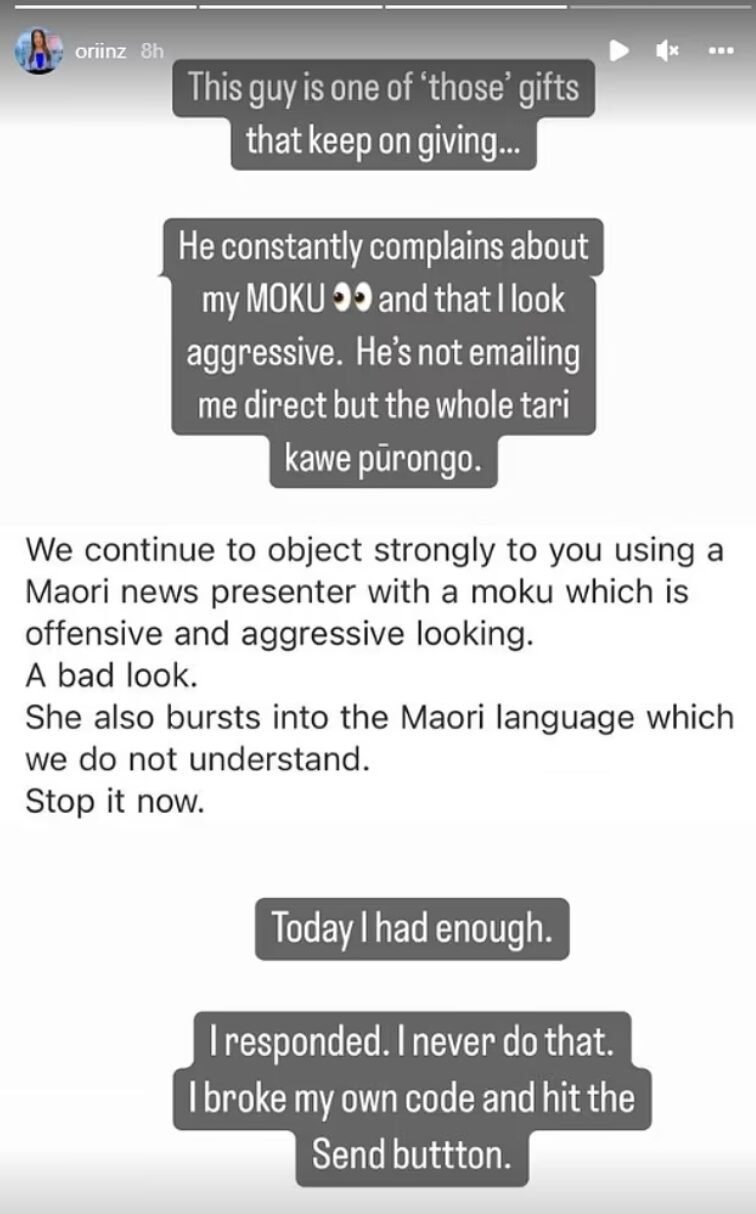
Kaipara didn’t just share screenshots of David’s email, she also responded to him. She explained that his complaint wasn’t valid because she hadn’t broken any rules for TV.
She also corrected David’s spelling mistake. He called her tattoo a “moku” instead of “moko”.
In her email back to him, Kaipara said, “I think you don’t like how I look on TV. But tattoos and people with them aren’t scary or bad. We don’t deserve to be treated badly because of them.”
She asked him to stop complaining and to try to understand better. She even joked that maybe he should go back to the 1800s if he couldn’t accept people with tattoos.
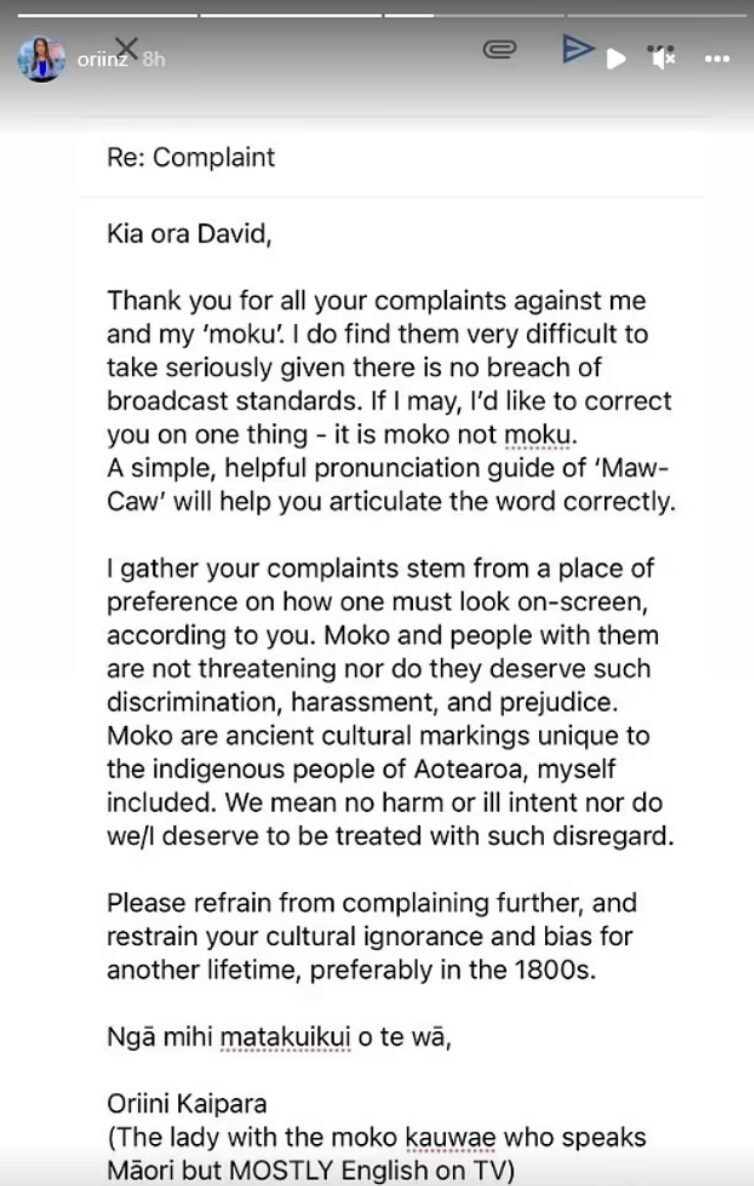
Despite David’s negative words, Kaipara says she mostly gets nice comments, and mean ones are rare.
In an interview with the New Zealand Herald, Kaipara talked about how it’s important to have more Māori people in important jobs. She said, “The fact that my existence makes some people upset shows why we need more Māori people in every job.”
Kaipara’s calm response reminds us how important it is to be proud of who you are, even when people are mean. She’s inspiring others to be proud of themselves and stand up to unfair treatment.
What do you think of this story? Share your thoughts in the comments!
Lady Spots Daughter and Son-in-Law Who ‘Tragically Died’ 5 Years Ago and Follows Them – Story of the Day

Miriam’s relaxing beach getaway was shattered when she locked eyes with her daughter Pamela and her son-in-law across the hotel lobby, the same people she had tearfully buried five years earlier. With her heart racing, Miriam had to decide: confront the ghosts before her, or let them slip away into the sun-drenched crowd.
Miriam stepped out of the airport shuttle, inhaling deeply. The salty air of The Bahamas filled her lungs, which was a welcome change from the stuffy plane cabin.
At sixty-five, this vacation was long overdue. Five years of grief had taken their toll on Miriam, etching lines around her eyes and mouth that hadn’t been there before.
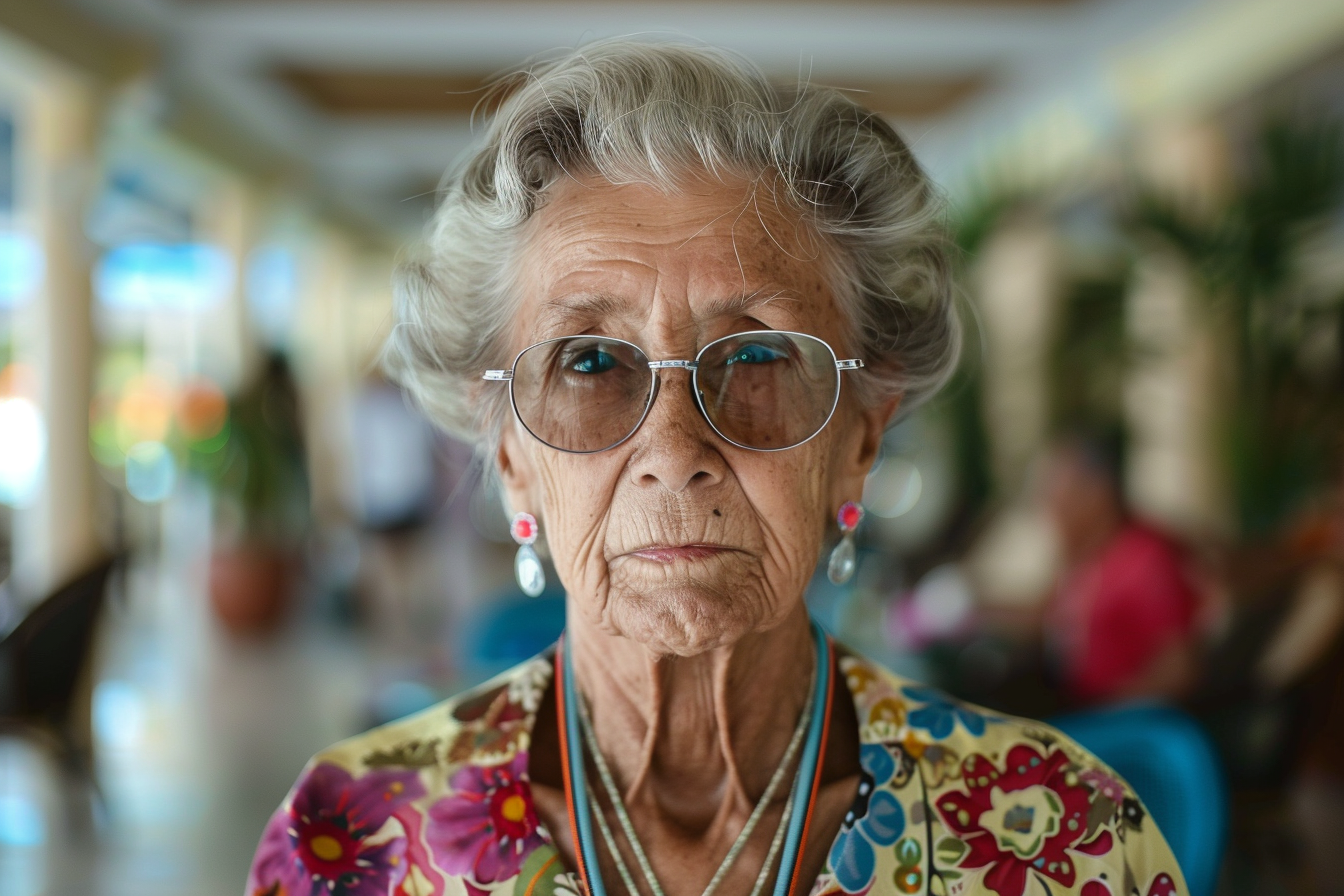
For illustration purposes only | Source: Midjourney
The Ocean Club Resort rose before her. Its gleaming structure promised nothing but relaxation and escape, so Miriam allowed herself a small smile as she followed a bellhop into the lobby.
The marble floors echoed with the chatter of excited tourists and the clinking of luggage carts, and Miriam stared at all their happy faces, hoping she would end up feeling just like them.

For illustration purposes only | Source: Pexels
“Welcome to The Ocean Club, ma’am. May I have your name for check-in?” The receptionist’s cheerful voice snapped Miriam out of her thoughts.
“Leary. Miriam,” she replied, fishing for her ID from her purse.
As the receptionist tapped away at the computer, Miriam’s gaze wandered. That’s when she saw them.

For illustration purposes only | Source: Midjourney
Time seemed to stop.
Her breath caught in her throat.
Standing by the gift shop, examining a display of colorful seashells, were two people who couldn’t possibly be there. Her daughter, Pamela, and son-in-law, Frank.

For illustration purposes only | Source: Midjourney
But they were dead. Killed in a car crash five years ago… Or so she thought.
“Ma’am? Your room key,” the receptionist’s voice sounded distant.
Miriam’s hand shot out, grabbing the key without looking, while her eyes never left the couple as they turned away from the gift shop and headed for the exit.
“Hold my bags,” Miriam barked, already moving. “I’ll be right back.”
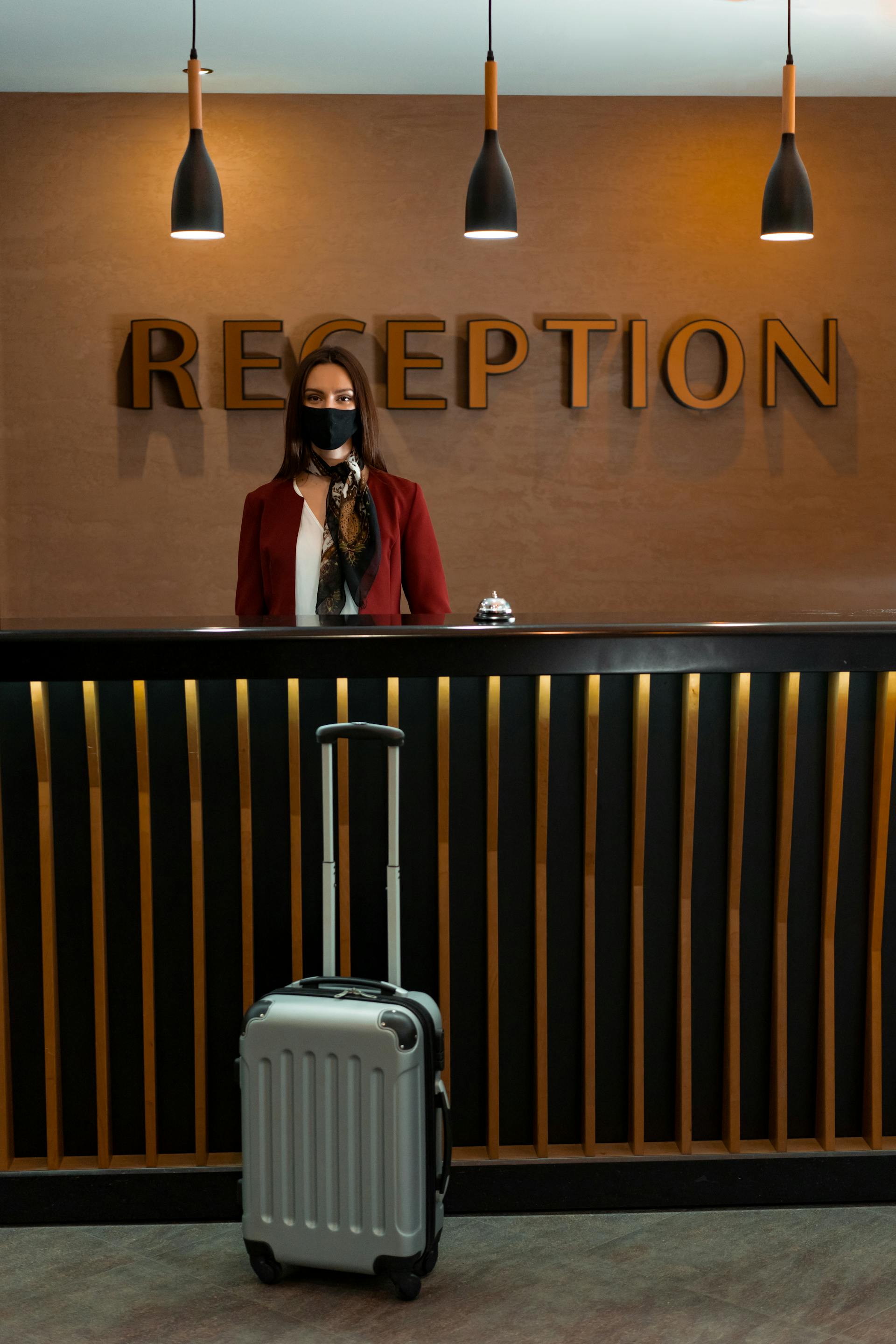
For illustration purposes only | Source: Pexels
She hustled across the lobby, struggling with her breath. She was really out of shape, and the couple was almost at the door.
“Pamela!” Miriam called out. Even her own ears heard the desperation.
The woman turned, and her eyes widened in shock. It was unmistakably Pamela!
Suddenly, she grabbed her husband’s arm and whispered something urgently. Frank looked back, and Miriam saw his face transform into a mask of panic.

For illustration purposes only | Source: Pexels
Without any more warning, they bolted.
Miriam’s heart raced as she followed them out into the bright sunlight.
“Stop right there!” she yelled, her voice carrying across the palm-lined driveway. “Or I’ll call the police!“

For illustration purposes only | Source: Midjourney
The threat worked.
The couple froze, and their shoulders slumped in defeat. Slowly, they turned to face her.
Pamela’s eyes brimmed with tears, but Miriam had no idea why. Was Pamela crying because of guilt, because of the lie, or because of something else?

For illustration purposes only | Source: Pexels
“Mom,” her daughter whispered. “We can explain.”
***
Pamela and Frank’s hotel room door clicked shut behind them, sealing off the cheerful vacation atmosphere outside. Inside, the air felt heavy, charged with the past five years of Miriam’s mourning and her current anger.

For illustration purposes only | Source: Pexels
She stood rigid with her arms crossed. “Start talking,” she demanded firmly.
Frank cleared his throat. “Mrs. Leary, we never meant to hurt you.”
“Hurt me?” Miriam’s laugh was harsh. “I buried you. Both of you. I grieved for five years. And now you’re standing here, telling me you never meant to hurt me?”
Pamela stepped forward, trying to reach out. “Mom, please. We had our reasons.“

For illustration purposes only | Source: Pexels
Miriam recoiled from her daughter, although she also had the same urge. “What reason could possibly justify this?”
Frank and Pamela exchanged troubled glances, and it took a second before Frank spoke. “We won the lottery.”
Silence fell, broken only by the distant sound of waves crashing on the beach outside.
“The lottery,” Miriam repeated flatly. “So you faked your own deaths… because you won money?”
Pamela nodded and began to elaborate, although her voice could barely be heard.

For illustration purposes only | Source: Pexels
“It was a lot of money, Mom. We knew if people found out, they’d all want a piece. We just wanted to start fresh, without any obligations.”
“Obligations?” Miriam’s own voice rose. “Like paying back the money you borrowed from Frank’s family for that failed business? Like being there for your cousin’s kids after their parents died? Those kinds of obligations?”
Frank’s face hardened. “We didn’t owe anyone anything. This was our chance to live the life we always wanted, and we don’t plan on letting anyone get in our way.”
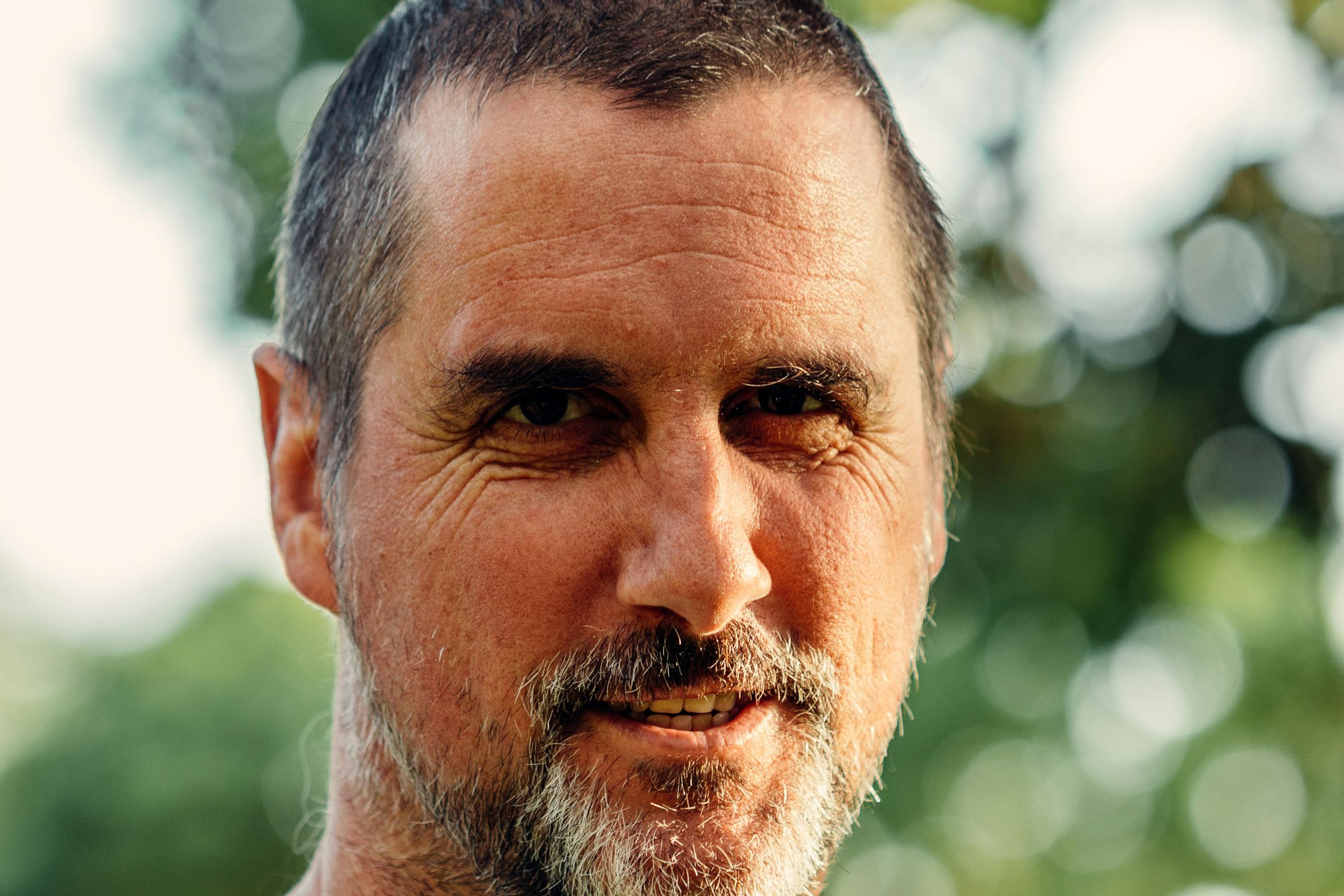
For illustration purposes only | Source: Pexels
“At the expense of everyone who loved you, and I bet you’re also avoiding taxes,” Miriam shot back. She turned to her daughter. “Pamela, how could you do this? To me?”
Pamela looked down and sniffled. “I’m sorry, Mom. I didn’t want to, but Frank said…”
“Don’t blame this on me,” Frank interjected. “You agreed to the plan.”
Miriam watched as her daughter wilted under her husband’s glare. At that moment, she clearly saw the dynamic between them, and her heart broke anew.

For illustration purposes only | Source: Pexels
“Pamela,” she said softly. “Come home with me. We can fix this. Make it right.”
For a moment, hope flared in Pamela’s eyes. Then Frank’s hand clamped down on her shoulder.
“We’re not going anywhere,” he said, resolute. “Our life is here now. We have everything we need.”
Pamela’s shoulders slumped. “I’m sorry, Mom,” she whispered. “I can’t.“
Miriam stood there, staring at the strangers her daughter and son-in-law had become. Without another word, she turned and walked out of the room.

For illustration purposes only | Source: Midjourney
She couldn’t enjoy her vacation after that and changed her plans immediately. But the trip home was a blur.
Miriam moved on autopilot as her mind replayed the confrontation over and over. What should she do? Was faking your death illegal? Was Frank hiding something else?
However, by the time she reached her empty house, she had made a decision. She wouldn’t report them. Not yet.
She’d leave that door open, hoping against hope that Pamela would walk through it one day.

For illustration purposes only | Source: Midjourney
***
Three years passed.
Miriam tried to move on, but the weight of this secret and the pain of betrayal never truly left her. Then, one rainy afternoon, there was a knock at her door.
Miriam opened it to find Pamela standing on her porch, soaked from the rain, with her arms wrapped around her body and looking utterly lost.
“Mom,” Pamela’s voice cracked. “Can I come in?”

For illustration purposes only | Source: Pexels
Miriam hesitated, then stepped aside.
Pamela shuffled in, leaving a trail of water on the hardwood floor. In the harsh light of the entryway, Miriam could see how much her daughter had changed.
The designer clothes and perfectly styled hair were gone, replaced by worn jeans and messy hair. Dark circles shadowed her eyes.
“What happened?” Miriam asked, her tone carefully neutral.

For illustration purposes only | Source: Midjourney
Pamela sank onto the couch, her shoulders hunched. “It’s all gone,” she whispered. “The money, the house, everything. Frank… he got into some bad investments. Started gambling. I tried to stop him, but…”
She looked up, meeting Miriam’s eyes for the first time. “He left. Took what was left and disappeared. I don’t know where he is.”
Miriam sat down across from her daughter, processing the information.

For illustration purposes only | Source: Midjourney
Part of her wanted to comfort Pamela, to wrap her in a hug and tell her everything would be okay. But the wounds were still too fresh, the betrayal too deep.
“Why are you here, Pamela?” she asked quietly.
Pamela’s lips trembled. “I didn’t know where else to go. I know I don’t deserve your help, after everything we did. How selfish I was. But I… I miss you, Mom. I’m so sorry. For all of it.”
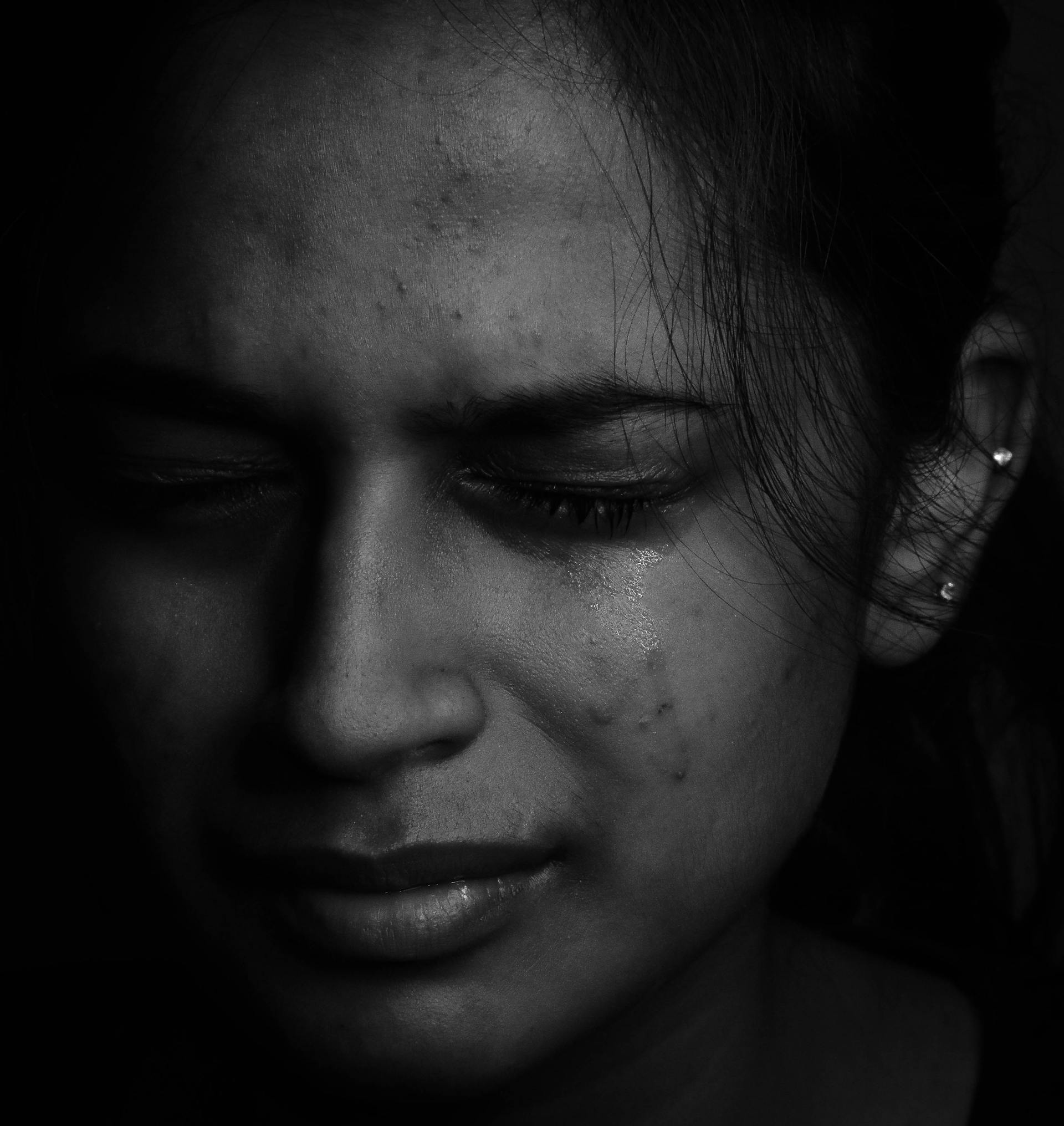
For illustration purposes only | Source: Pexels
Silence stretched between them because Miriam had no idea what to do. This was what she wanted ever since that day in The Bahamas.
So, she studied her daughter’s face, searching for signs of the girl she used to know. After a few moments, Miriam sighed.
“I can’t just forgive and forget, Pamela. What you and Frank did… it was more than just lying. I think you broke the law. Faking your death may not be exactly illegal, but I bet you didn’t pay any taxes on that money. But also, you hurt a lot of people, not just me.”

For illustration purposes only | Source: Midjourney
Pamela nodded as fresh tears spilled down her cheeks. “I know,” she whispered. “And you’re right. Part of the reason Frank wanted to leave was to avoid paying taxes. Everything else… what he didn’t want to pay back to his family… well, that was just icing.”
“If you want to make this right with me and with everyone else,” Miriam continued, her voice firm, “you need to face the consequences. That means going to the police. Telling them everything. About the faked deaths and everything else you two did with that money. All of it.”
Pamela’s eyes widened in fear. “But… I could go to jail.”

For illustration purposes only | Source: Pexels
“Yes,” Miriam agreed. “You could. I don’t want you to, but it’s the only way forward. The only way to truly make amends.”
For a long moment, Pamela sat frozen, sniffling slightly. Then, slowly, she nodded. “Okay,” she said softly. “I’ll do it. Whatever it takes.”
Miriam felt a glimmer of pride break through her anger and hurt. Maybe her daughter wasn’t completely lost after all. Being far away from Frank was definitely a good thing for her.
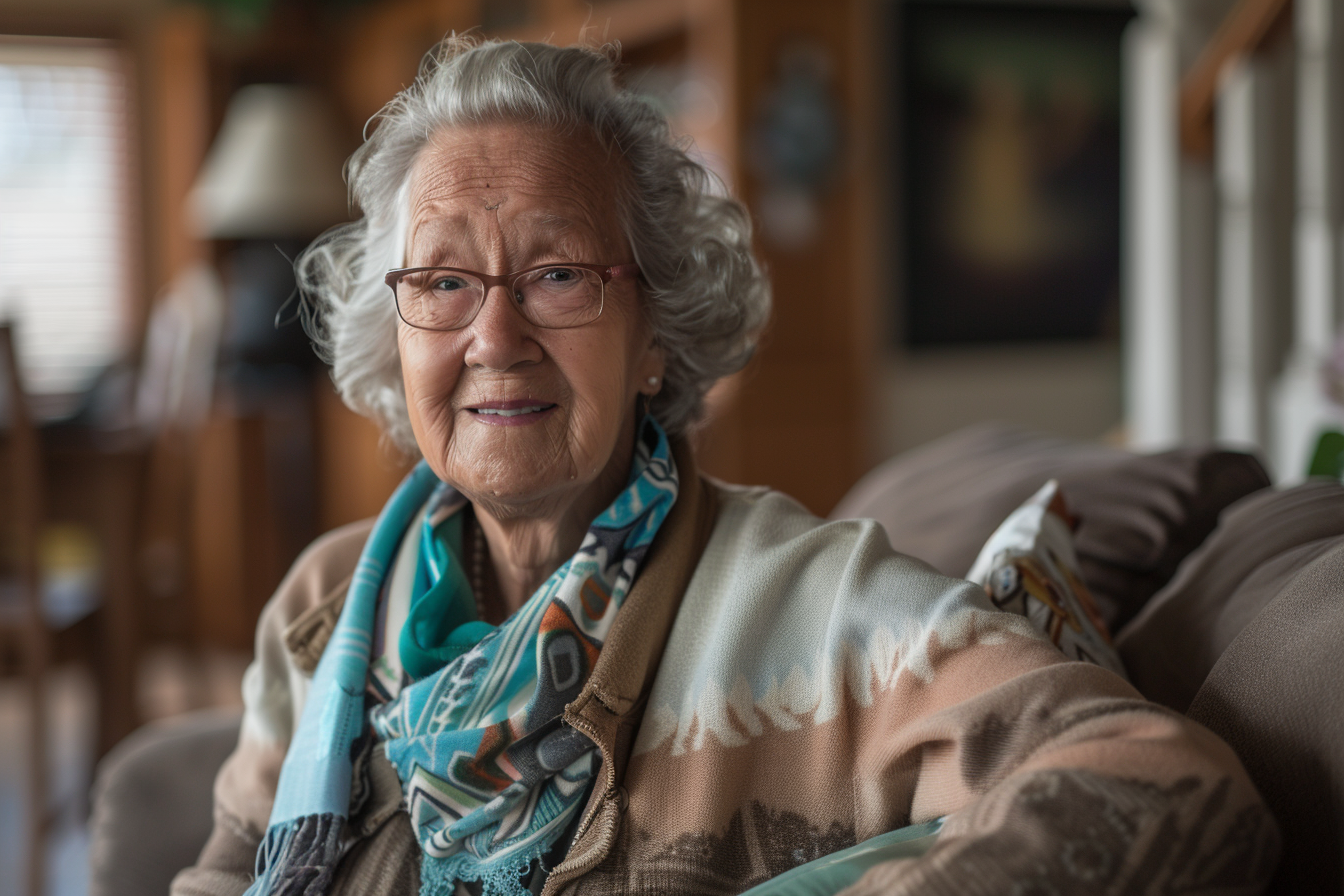
For illustration purposes only | Source: Midjourney
“Alright then,” she said, standing up. “Let’s get you into some dry clothes. Then we’ll head down to the station.”
As they walked out to the car a short while later, Pamela hesitated. “Mom?” she asked. “Will you… will you stay with me? While I talk to them?”
Miriam paused, then reached out and squeezed her daughter’s hand, allowing herself to again feel and show all the love she had for her. “Yes,” she said warmly and desperately. “I’ll be there, for sure.”
“Thank you,” Pamela nodding and taking a deep breath. Suddenly, her expression shifted. Her mouth set in a firm line, and determination filled her eyes. “Let’s go.”

For illustration purposes only | Source: Pexels
There’s my girl!
This work is inspired by real events and people, but it has been fictionalized for creative purposes. Names, characters, and details have been changed to protect privacy and enhance the narrative. Any resemblance to actual persons, living or dead, or actual events is purely coincidental and not intended by the author.
The author and publisher make no claims to the accuracy of events or the portrayal of characters and are not liable for any misinterpretation. This story is provided “as is,” and any opinions expressed are those of the characters and do not reflect the views of the author or publisher.


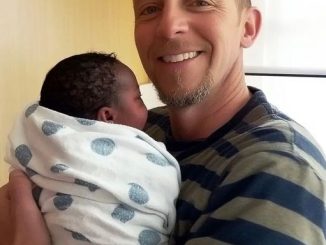
Leave a Reply